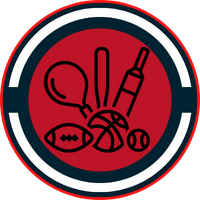What Are the Differences Between NLU, NLP, and NLG?
Natural language understanding (NLU) is a subfield of natural language processing (NLP), which involves transforming human language into a machine-readable format. Systems will be trained to identify and respond to human emotions expressed in text and speech. This development will have far-reaching applications in mental health support, customer service, and user sentiment analysis.
- NLU is programmed to decipher command intent and provide precise outputs even if the input consists of mispronunciations in the sentence.
- NLU is also utilized in sentiment analysis to gauge customer opinions, feedback, and emotions from text data.
- NLP is a branch of AI that deals with the automatic processing and analysis of human language.
- Natural Language Understanding, a field that sits at the nexus of linguistics, computer science, and artificial intelligence, has opened doors to innovations we once only dreamt of.
- Over the past decade, how businesses sell or perform customer service has evolved dramatically due to changes in how customers interact with the business.
Language generation uses neural networks, deep learning architectures, and language models. Large datasets train these models to generate coherent, fluent, and contextually appropriate language. Join us as we unravel the mysteries and unlock the true potential of language processing in AI. Natural Language Generation(NLG) is a sub-component of Natural language processing that helps in generating the output in a natural language based on the input provided by the user. This component responds to the user in the same language in which the input was provided say the user asks something in English then the system will return the output in English. Artificial intelligence is critical to a machine’s ability to learn and process natural language.
What is Natural Language Processing (NLP)
NLP is used in industries such as healthcare, finance, e-commerce, and social media, among others. For example, in healthcare, NLP is used to extract medical information from patient records and clinical notes to improve patient care and research. NLP involves the processing of large amounts of natural language data, including tasks like tokenization, part-of-speech tagging, and syntactic parsing. A chatbot may use NLP to understand the structure of a customer’s sentence and identify the main topic or keyword. On the other hand, natural language understanding is concerned with semantics – the study of meaning in language. NLU techniques such as sentiment analysis and sarcasm detection allow machines to decipher the true meaning of a sentence, even when it is obscured by idiomatic expressions or ambiguous phrasing.
LLM optimization: Can you influence generative AI outputs? – Search Engine Land
LLM optimization: Can you influence generative AI outputs?.
Posted: Thu, 12 Oct 2023 07:00:00 GMT [source]
Understanding the difference between these two subfields is important to develop effective and accurate language models. NLP models evaluate the text, extract key information, and create a summary. To explore the exciting possibilities of AI and Machine Learning based on language, it’s important to grasp the basics of Natural Language Processing (NLP). It’s like taking the first step into a whole new world of language-based technology.
What are Expert Systems in AI?
Have you ever wondered how Alexa, ChatGPT, or a customer care chatbot can understand your spoken or written comment and respond appropriately? NLP and NLU, two subfields of artificial intelligence (AI), facilitate understanding and responding to human language. Both of these technologies are beneficial to companies in various industries. Instead, machines must know the definitions of words and sentence structure, along with syntax, sentiment and intent. Natural language understanding (NLU) is concerned with the meaning of words.
If you produce templated content regularly, say a story based on the Labor Department’s quarterly jobs report, you can use NLG to analyze the data and write a basic narrative based on the numbers. It takes data from a search result, for example, and turns it into understandable language. Once a chatbot, smart device, or search function understands the language it’s “hearing,” it has to talk back to you in a way that you, in turn, will understand. NLP is also used whenever you ask Alexa, Siri, Google, or Cortana a question, and anytime you use a chatbot.
Read more about https://www.metadialog.com/ here.
